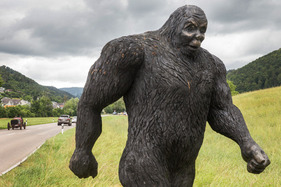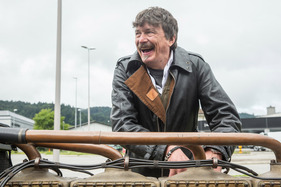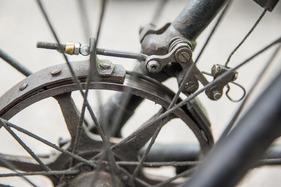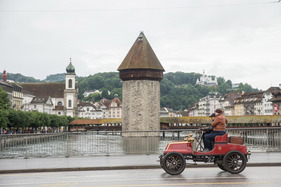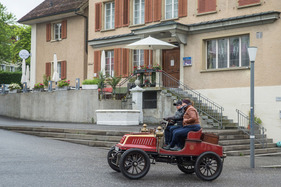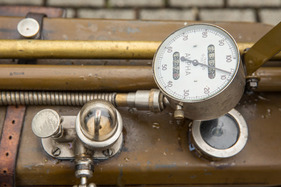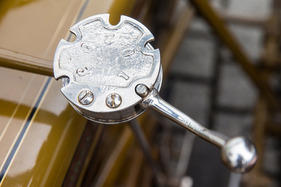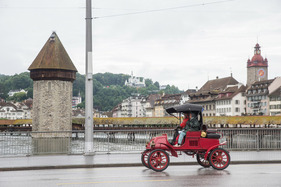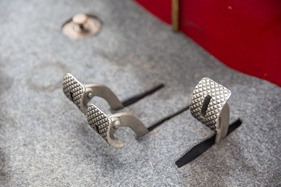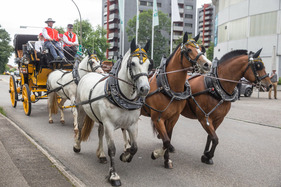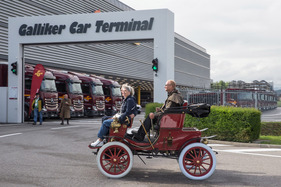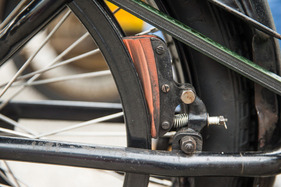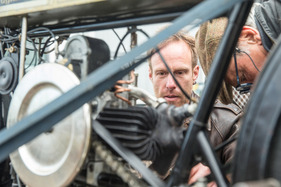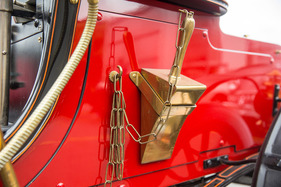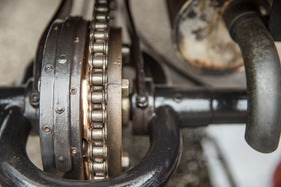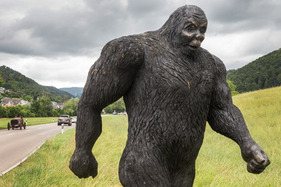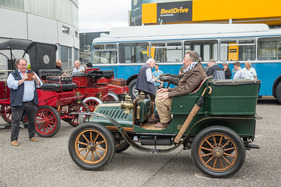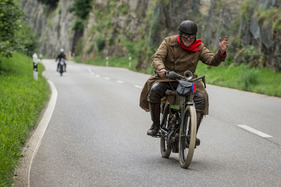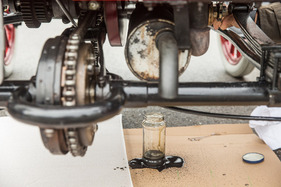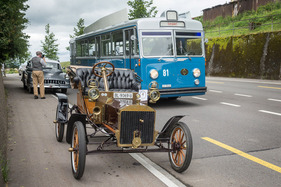In England, the new legal independence of the automobile was celebrated in 1896 with a drive from London to Brighton. As early as 1927, this historic event was commemorated with a new edition for veteran vehicles, which is still held annually today. The show run of the Schnauferl starts at sunrise in Hyde Park in London and leads along the A23 to Brighton, where the finish line awaits after 86 kilometers.
Adaptation of an idea
Stephan Musfeld, a frequent participant in the "Veteran Car Run London to Brighton", has been thinking for some time about organizing a version of this "race" in his own, very Swiss form. His version is now called the "Lucerne to Basel Veteran Run". The Swiss Museum of Transport in Lucerne, with Daniel Geissmann in charge, has offered to partner this idea. Compared to the trip to Basel, the original seems like an excursion. The first thing you need to know is that only cars built up to and including 1904 are permitted on both trips - in other words, only vehicles from the pioneering days of the automobile. However, motorcycles up to 1924 and bicycles up to 1914 are also eligible to take part in the "Lucerne to Basel Veteran Run" to the Pantheon. And unlike in England, they have to cross a full-blown mountain range - the Jura over the Lower Hauenstein!
Unfortunately, however, the planned presentation of the vehicles in the middle of Lucerne's old town on Saturday literally fell through - or rather, the water fell on them. As a result, the participants only emerged from their dry shelter at 7:30 a.m. on Sunday morning and set off on their journey to Basel. Nine cars from De Dion-Bouton, Rambler, Georges Richard and Stevens-Duryea and fifteen motorcycles from Motosacoche, René Gillet, Adler, Royal Enfield, Douglas, New Hudson, Monet & Goyon and, of course, Harley-Davidson were entered alongside ten bicycles and six carriages.
Of course, the horses didn't have to run the whole way. They only pulled their carriages for a handful of kilometers. Only a few of the bicycles made it to the finish line, while six of the cars crossed the finish line in Muttenz. Of course, none of the spectators or participants in the "Lucerne to Basel Veteran Run" had experienced the year 1904. So everything was completely new and also completely different to anything previously seen at rallies or vintage car runs. For one day, you found yourself transported back 120 years to a completely unknown but very exciting time.
Intentional oil leak
The big hero of the day was definitely the Dufaux 80 HP from 1905, one of the most interesting cars ever built in Switzerland. Brothers Charles and Frédéric Dufaux initially raced bicycles and, after the turn of the century, had the idea of building automobiles so that they could successfully take part in major races - if they were going to build cars, they should do it properly. It was actually crazy when the first design was an eight-cylinder racing car for the Gordon Bennet race in 1904.
This car, which actually had an eight-cylinder engine cast in four blocks, had a displacement of 12,761 cc and produced around 80 hp at 1200 rpm. People expected a correspondingly rich sound from the vehicle with its thick exhaust pipe, which was capable of speeds of around 160 km/h, but were surprised by the same "Pft-pft-pft" as the De Dion-Bouton. At the beginning of the 20th century, the French were the world's largest car manufacturer and market leader for combustion engines.
Of course, vehicles over 100 years old are not quite like "normal" classic cars. They need a lot more understanding of their simple yet unfamiliar technology. For example, two "oil changes" had to be carried out en route - which was completely normal over a distance of 100 kilometers, as the oil does not circulate in the engine in the so-called loss lubrication system as it does today, but is lost after passing through the lubrication point. What ended up directly on the road back then is of course collected today and drained by hand at the break point. Fresh oil is then refilled from above. The motorcycles were even equipped with drain taps that could be operated with the foot.
Unlike on the British Isles, in mountainous Switzerland there is of course a pass to conquer. The 734-metre-high Hauenstein connects Olten with Sissach and formed a link from Lake Geneva to the Rhine as far back as the Roman Empire. With a barely audible "pft-pft-pft", the small, carriage-like vehicles made their way up the challenging ascent. However, three tractors were on hand to help, but only Georges Richard had to make use of them. All the other participants managed to climb the hill with seemingly no effort at all.
The future for the past
Everywhere along the way, the veterans were cheered on by enthusiastic spectators, some of whom were even invited for an aperitif - non-alcoholic, of course! The joy along the way and at the finish line was huge for all participants and spectators, because arriving was the top priority here, long before a podium place. The "Lucerne to Basel Veteran Run" was born on June 23, 2024 and hopefully there will be a sequel.
Will it last as long as its English role model? In 120 years, probably not a single modern car will be able to drive the 100 kilometers from Lucerne to Basel. The small mechanical problems with floats and carburetors, which can overflow with today's low-density petrol, are a piece of cake for experienced mechanics - in contrast to modern electronics, which can't just be patched up at the roadside.











